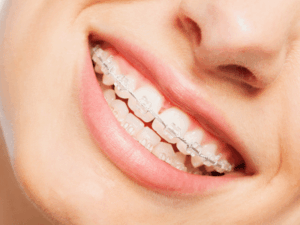
Braces vs Invisalign: Choosing the Right Option for You
Braces vs Invisalign: Choosing the Right Option for You If you’re researching orthodontic treatments, you’ve probably asked yourself the question: Braces vs Invisalign—what’s the right choice for me? This is one of the most common questions we hear at Greater Houston Orthodontics, and the answer depends on a number of personal factors, including your lifestyle, dental needs, and

What to Expect When Living with Clear Aligners
Starting treatment with clear aligners, such as Invisalign, is an exciting step toward a straighter smile, but it also introduces new routines and habits. These nearly invisible trays are a modern, low-profile alternative to traditional braces, giving you more freedom and confidence during treatment. Whether you’re just beginning or already a few weeks in, understanding what life looks

A Parent’s Guide to Braces for Kids
When it comes to orthodontic care for children, many parents feel uncertain about when to start and what to expect. From choosing the right time for a consultation to understanding the different types of treatment, there’s a lot to consider. Braces aren’t just about achieving a straight smile—they’re a valuable part of your child’s long-term oral health. Let’s

Can I Drink Coffee & Tea with Invisalign?
If you’re considering Invisalign treatment to straighten your teeth, you may be wondering if you can still enjoy your favorite drinks, like coffee or tea. Many people rely on their daily caffeine fix, and giving it up completely might seem impossible. The good news? You can still drink coffee and tea during Invisalign treatment—but there are some important

Fresh Breath Tips for Braces and Invisalign
Undergoing orthodontic treatment with braces or Invisalign is an exciting step toward a perfect smile. However, one common challenge many patients face is maintaining fresh breath. With braces, food particles can easily get trapped, while Invisalign aligners can harbor bacteria if not cleaned properly. Fortunately, with the right oral care routine, you can keep your breath fresh and

5 Essential Tips for Keeping Your Braces Clean
Maintaining excellent oral hygiene with braces doesn’t have to be complicated, but it does take a little extra effort! With brackets and wires creating new spaces for food to get trapped, keeping your teeth clean requires a few simple adjustments to your routine. The good news? Achieving a healthy, beautiful smile during your orthodontic treatment is absolutely possible
